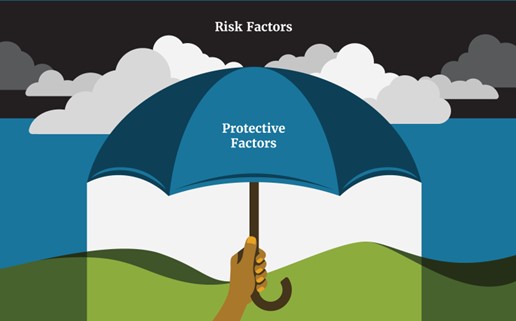Adverse Childhood Experiences (ACE) in Minnesota
Contact Info
Protective Factor Basics
Protective factors are like a shield that can prevent people from being overwhelmed by high levels of stress, violence, and health problems. In child welfare work, protective factors are organized into six categories according to the Strengthening Families Model:
- Nurturing and attachment.
- Knowledge of parenting for child and youth development.
- Parental resilience.
- Social conditions.
- Concrete supports for parents.
- Social and emotional competence of children.
Protective factors include things like parents feeling supported emotionally and financially, children feeling connected to family and friends, and both parents and children learning how to talk about and manage emotions in a healthy way. Strengthening protective factors in children can look like:
- Spending time together as a family or talking if families can’t be together.
- Learning about and naming emotions.
- Enjoying and caring about school.
- Participating in community activities like volunteering, playing sports, joining a faith community, or joining a club.
- Feeling empowered to make decisions.
- Feeling confident to solve problems.
- Feeling safe at school and home.
The more protective factors a person has the better. All people need positive childhood experiences to thrive, even if the person has not experienced childhood trauma. Just like with trauma, there are protective factors that have been commonly identified among people who have thrived despite experiencing childhood trauma called Positive Childhood Experiences (PCEs) including:
- The ability to talk with family about feelings.
- The sense that family is supportive during difficult times.
- The enjoyment of participation in community traditions.
- Feeling a sense of belonging in high school.
- Feeling supported by friends.
- Having at least two non-parent adults who genuinely care.
- Feeling safe and protected by an adult in the home.
Why do Protective Factors matter?
Protective factors help a child feel safe more quickly after experiencing the toxic stress of ACEs and help to neutralize the physical changes that naturally occur during and after trauma. The presence of protective factors, particularly safe, stable, and nurturing relationships, can mitigate the consequences of ACEs. Individuals, families, and communities can all influence the development of many protective factors throughout a child’s life that can impact their development.

Source: https://dhs.wisconsin.gov/resilient/risk-protective-factors.htm
Protective Factors in Minnesota
The Minnesota Student Survey (MSS) is our best source of data for measuring protective factors among Minnesota students. The MSS asks students to respond to statements like:
- I feel valued and appreciated by others.
- I resolve conflicts without anyone getting hurt.
- Adults at my school listen to the students.
- I find good ways to deal with things that are hard in my life.
- I express my feelings in proper ways.
- I feel safe at home.
The most common protective factor among Minnesota children and adolescents is feeling safe at home (98%). The least common is having a positive identity (71%). Having a positive identity includes feeling in control of your life and future, feeling good about yourself, and dealing well with hard things and disappointment.